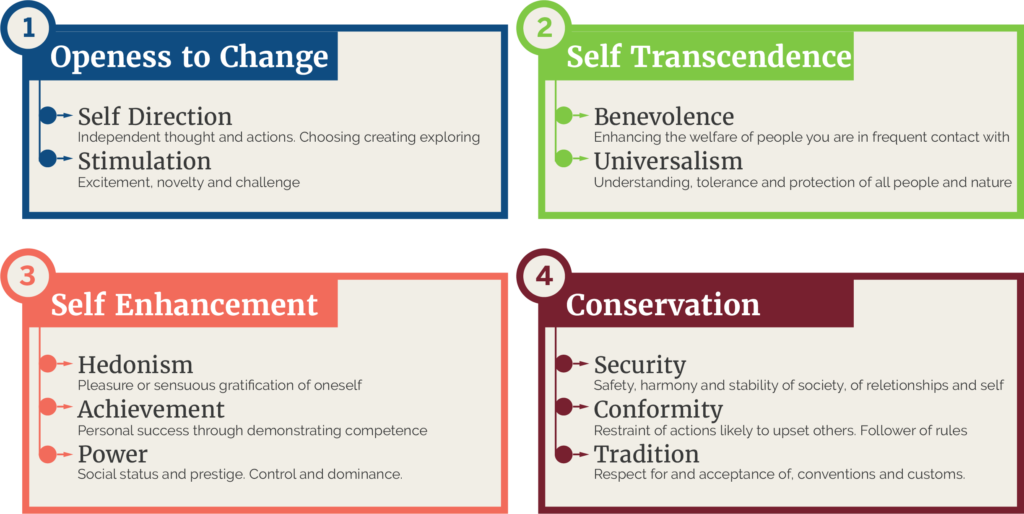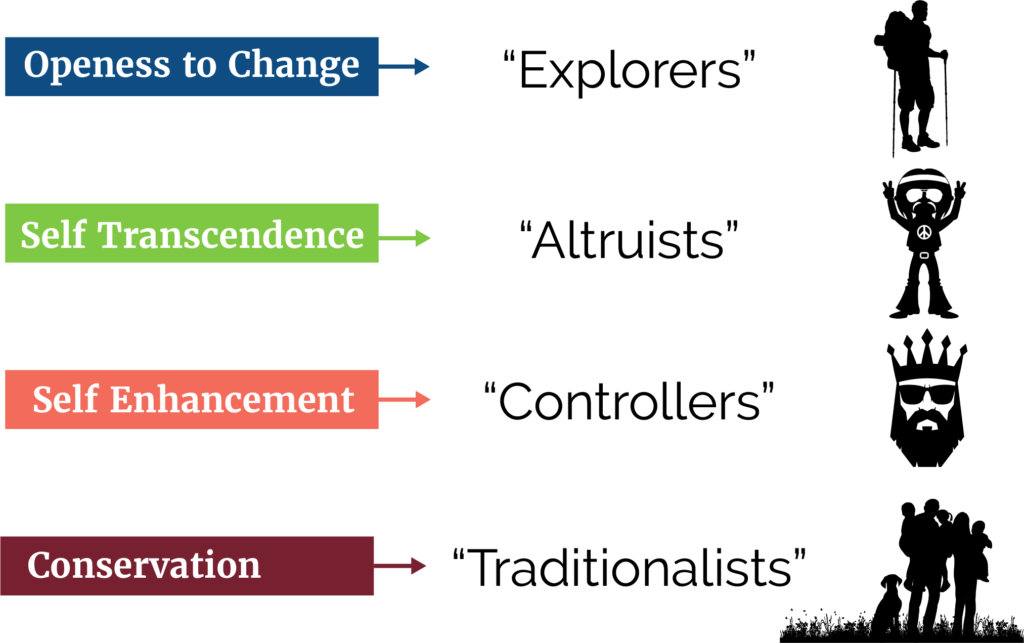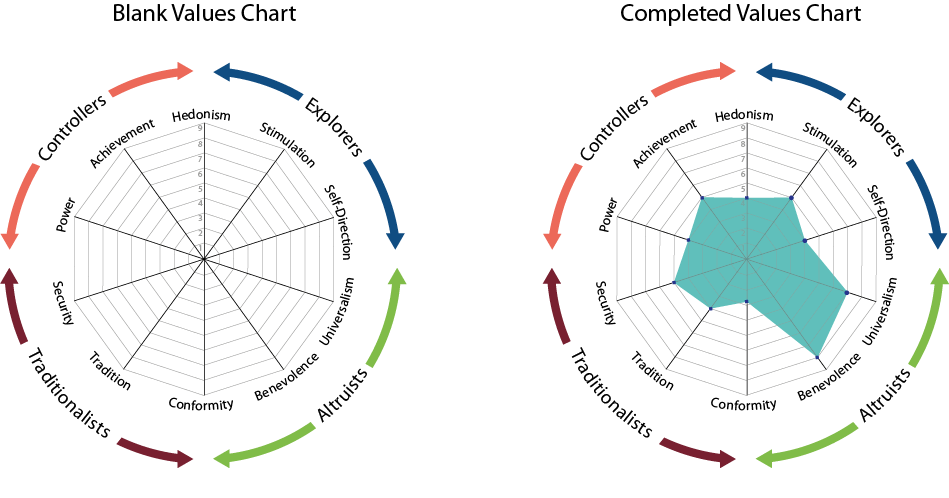When you think of values, at least in a marketing context, it is easy to be cynical and think of that insincere, disingenuous and opportunistic corporate virtue signaling that we have all been exposed to. Like a bank who claims to be ‘part of your family, here for you through good times and bad’ but repossesses thousands of homes every year. That kind of thing.
The whole ‘does this halo suit me?’ trend is not just a marketing phenomenon. Politicians, who have voted consistently to cut the pay of nurses, stand in front of TV cameras to ritualistically clap and publicly demonstrate their appreciation for healthcare workers. Super rich celebrities give environmental advice from the back of a private jet. It’s enough to make Pollyanna give up.

But the purpose of this article is not to call out the rampant hypocrisy of vanity dressed up as selfless conviction (well no more than I already have). It is about seeing beyond that and recognising the significant role values play in marketing. Not as a way to enhance your moral and ethical reputation, or to exploit the public mood, but as a way to understand, at least in part, how customers buy.
The idea of ‘core values’ as a concept upon which to base marketing strategies is not new. The belief that consumers care less about the superficial aspects of a product and more about the values and ideals represented by those products has become more accepted in recent years. (although, in reality, the ratio of sincerity to superficiality is probably overstated)
What are Values?
Marketing and values is a pretty broad topic. In order to address marketing and values efficiently we need to answer a question – what are values are and how can you use them in your marketing? Ok, that’s two questions. Let’s see if we can answer them both.
Values are the first principles of understanding human behaviour. They are not emotions or personality traits. Values are deep rooted, implicit motivators. They drive emotions, feelings, beliefs and behaviours.
According to Shalom H. Schwartz, a social psychologist and the creator of the theory of basic human values, there are ten basic values that can be organised into four higher order groups, as shown below.

These values represent universal values that are recognised throughout all human cultures. It is an ongoing piece of academic work and, as fascinating as it is, we will need to translate into a more practical marketing tool.
Creating personas
We need a more descriptive, persona type name for the four higher order groups. And while this will help to humanise the academic classifications, it does run the risk of making the groups more superficial and personality based.
With that caveat in mind, this is my attempt at renaming. You may do a better job after reading the descriptions. If so, please let me know.

Let’s flesh those out a little. Remembering that we are not looking to describe behaviours, we are looking to identify the underlying values that drive behaviours.
Explorers
Explorers enjoy the new and the different. They are driven by values such as creativity, inquisitiveness, curiosity, self-sufficiency, resourcefulness, rule-breaking, and non-conformity. They are the free thinkers who look for innovative ways to do things. They are likely to take risks and enjoy the thrill of the unknown. A sense of adventure and experimentation gives them a strong bias for action.
Altruists
Altruists are visionaries who are not happy with the status quo. But unlike explorers they don’t want change for change sake or for personal experience, they are driven by a higher purpose. They value progressiveness, egalitarianism, fairness, honesty, pacifism, conservation, integrity, education and equality. They are likely to be activists for a cause they believe in. They support change they consider good for all. They want to make the world a better place.
Controllers
Controllers are driven by some, or all, of the following values; power, control, competitiveness, self-confidence, image consciousness, materiality, ambition and authoritarianism. They enjoy the pursuit and acquisition of wealth and enhanced status. They need to be respected and admired. They often exhibit a high degree of self-assurance and a sense of personal exceptionalism. They have an egocentric view of the world.
Traditionalists
Traditionalists are, in many ways, the opposite of explorers. They value security, conformity, modesty, orthodoxy, discipline, structure and rules. They follow rituals and respect conventions. They are conservative by nature and do not embrace change or enjoy taking risks. They are the late adopters. They have a strong sense of duty and believe in respect and reciprocation.
Evaluation
This is all very neat and tidy but only of so much use. People do not typically fit neatly into one of these four boxes. We are all a unique blend of multiple values. But we need to understand which one dominates and by how much.
To do this, the ten basic values are arranged in a circle with each quadrant representing one of the four higher-order groups.
You use a pairwise comparison to evaluate how important each of the ten values are to the subject and place a dot along each ‘spoke’ corresponding to their answers. These are joined up to create a radar chart as shown on the right. Which gives you a values profile. (Obviously I’ve skipped a few details here in the interest of brevity. If you are a ‘details’ type of person then get in touch)

The person whose profile is shown above is fairly balanced across most values dimensions, but is strongly driven by benevolence and universalism. They would be classified as an altruist in my naming system. All things being equal, they would respond positively to any credible claim or positioning relating to the environment, conservation, equality, inclusiveness, etc. They would also relate more to a brand or company which could credibly demonstrate they shared these values.
Meanwhile, back in the real world…
Values aren’t some silver bullet that will revolutionise your market position. They don’t replace product quality, availability and price. But they can enhance them. They can provide significant incremental differentiation, and sometimes that’s all you need.
Implementing values-based marketing does not work for every product. Even when it is a credible option, it may be more of an incremental improvement rather than a game-changer. But it is something you should have in your marketing toolbox. When all things are equal, in terms of product performance and price, marginal improvements make a big difference.
What Now?
So, now you have an understanding of the concept. But how can you make practical use of it? It is not likely you will be able to analyse all of your customers. But once you understand what an explorer/altruist/traditionalist/controller looks like, you can make a pretty good estimate of which customer fits where. In my experience, once you understand the four values types, most businesses can collectively place key customers into the right quadrant. If you can’t, then you may not be as close to your customers as you should be.
If you have strong data skills, you could develop probabilistic classifiers or other discriminant analysis techniques (not as scary as they sound – you can do these in excel) and look for readily available variables that collectively indicate a value preference. You could then use these for values-based segmentation, for example.
Perhaps most effectively, you could create an experiment. Test out distinctive messages and content focused on different value dimensions and see how well, and with whom, these messages get the best response.
As an example, imagine you are marketing car tyres. For the altruist you would emphasise your green credentials or ethical sourcing methods (such as you have any). For the explorer you might focus on performance and technology. For the traditionalist you would focus on safety and reliability. For the controllers you would focus on prestige and quality.
The simplest approach of all is just to incorporate some values elements (that you can credibly stand behind) into your positioning, especially where you see a gap that isn’t being addressed by your competition.
A final word – be sincere. As i mentioned before, claiming values that you can’t support, or don’t have evidence for, is vanity dressed up as conviction. And that is not a good look on anybody.

 Sean Welham
Sean Welham